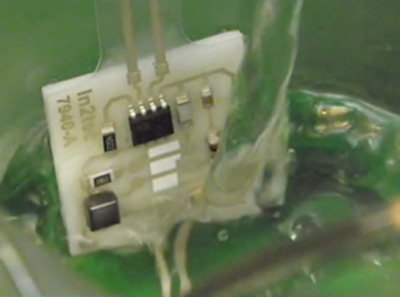Nov 1 2012
The National Physical Laboratory (NPL), along with partners In2Tec Ltd (UK) and Gwent Electronic Materials Ltd, have developed a printed circuit board (PCB) whose components can be easily separated by immersion in hot water.
 Recycling this printed circuit board is as easy as making a cup of tea - simply add hot water, and the bonding material dissolves away leaving you with 90% of your components to re-use as you wish
Recycling this printed circuit board is as easy as making a cup of tea - simply add hot water, and the bonding material dissolves away leaving you with 90% of your components to re-use as you wish
The work was part of the ReUSE project, funded by the UK government's Technology Strategy Board.
The Challenge
The electronics industry has a waste problem - currently over 100 million electronic units are discarded annually in the UK alone, making it one of the fastest growing waste streams.
It was estimated in a DTI-funded report, that around 85% of all PCB scrap board waste goes to landfill. Around 70% of this being of non-metallic content with little opportunity for recycling. This amounts to around 1 million tonnes in the UK annually equivalent to 81 x HMS Belfasts.
The Solution
The aim of the ReUSE (Reuseable, Unzippable, Sustainable Electronics) project was to increase the recyclability of electronic assemblies, in order to avoid an ever-growing volume of waste.
The project partners designed, developed and tested a series of unzippable polymeric layers which, while withstanding prolonged thermal cycling and damp heat stressing, allow the assemblies to be easily separated at end-of-life into their constituent parts, after immersion in hot water.
ReUSE
The Impact
This revolutionary materials technology allows a staggering 90% of the original structure to be re-used. For comparison, less than 2% of traditional PCB material can be re-used. The developed technology lends itself readily to rigid, flexible and 3D structures, which will enable the electronics industry to pursue new design philosophies - with the emphasis on using less materials and improving sustainability.